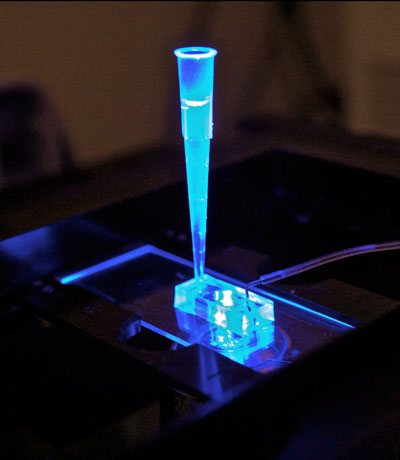The University of California at Berkeley created a heart on a chip: living cells pulsate and respond to drugs

A team of scientists from Berkeley "packed" living cells into a microchip , and they formed a fabric that can pulsate and respond to stimuli.
24 hours after the cells were loaded onto the device, they began to pulsate with a frequency of 55 to 80 beats per minute - this is the normal pulse of an average adult. Scientists have discovered that the system's response to the effects of drugs can be predicted: for example, after a half-hour exposure to isoproterenol, which is treated with bradycardia, the “heartbeat” on the chip has increased from 55 to 124 beats. The device is proposed to be used to check the reaction to drugs - so it will be possible to abandon experiments on animals.
"Cardiac microphysiological system" is designed in such a way that the silicon base repeats the location and positioning of tissues in the human heart. With the help of a cone-shaped tube, scientists loaded the required number of layers into the base. Microchannels allow you to imitate the exchange of nutrients and drugs in human tissues.
Due to the impossibility in the early stages of testing the drug in humans, the development of a drug may result in nothing. On average, $ 5 billion is spent on creating a new drug in the United States, 60% of which is spent on research and development. Using a human organ model will reduce costs and lower the cost of bringing a drug to the market. There is an alternative in the form of animal organs, but scientists from Berkeley note the problems of this method: for example, because of differences in the structure of ion channels between human and animal hearts, electric current is conducted with different intensities, and this is not the only difference that can be identified during drug testing. Scientists see a clear advantage in the models of organs on the chip.
')
Source: https://habr.com/ru/post/366485/
All Articles